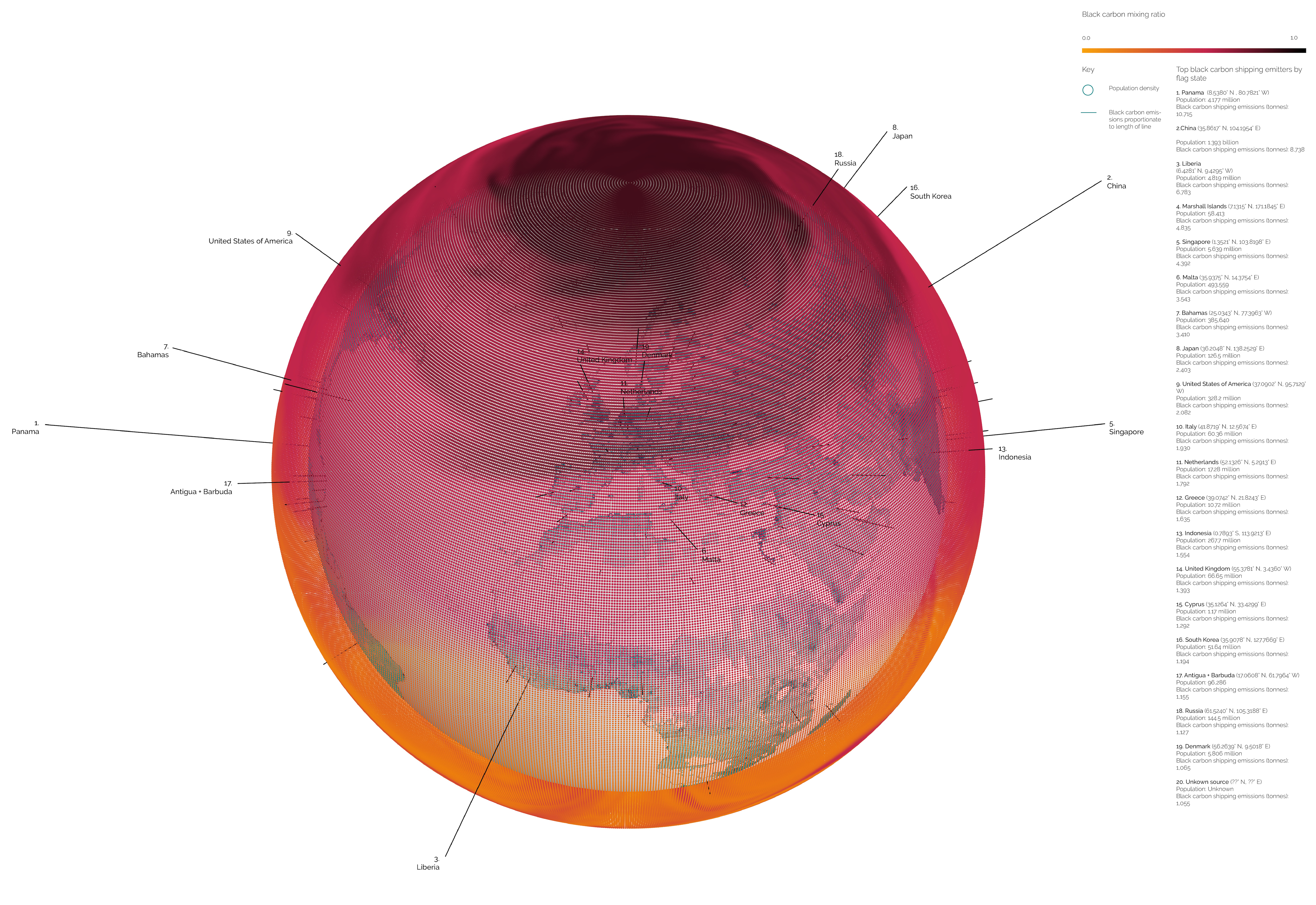Air, Architecture + Other Climates
[57.0°to 71.0° N : Norway] - 2019/20
John Cook, Ben Pollock + Laura Nica
︎︎︎ Home
︎︎︎ Previous // Next ︎︎︎
Kate Hosking

Black Ice Forum
Svalbard, Norway
Black carbon (soot) is a particle produced from incomplete combustion, shipping and burning fires. It is also one of the biggest contributors to climate change. With shipping increasing in the Arctic, more black carbon is being released into the atmosphere and subsequently falling on the Arctic ice after being in the air for a few days to weeks, reducing the reflectivity of the ice and causing the ice to melt faster. This had a profound effect on receding Arctic ice.
It is predicted that by 2090 85% of the sea ice will remain in winter whilst only 10% will remain in the summer. The reduced arctic sea ice affects sea temperatures, air temperature, animal migration and political conflicts. Until black carbon is recognised within climate change policies, the Arctic ice will continue to recede at unprecedented rates.
The Black Ice Forum is a master plan that addresses the issue of black carbon emissions and its detrimental effects on the melting arctic ice and consequently global warming. The purpose of the master plan is to use architecture as a climate marker within the shifting landscape of sea ice and to humanise the overwhelming topic of global warming. This is done by blurring the boundaries between architecture and landscape and by using the changing climatic conditions to expose, conceal and manipulate both the structure and its surroundings. The project also seeks to bring black carbon to the forefront of climate summits through the implementation of policies, a new measure of GDP (based on environmental factors) and black carbon credits.





︎︎︎ Home
︎︎︎ Previous // Next ︎︎︎